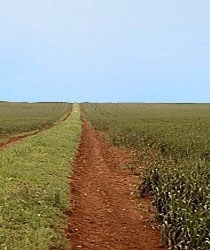 Pesticides are important in ICM, but their use can usually be reduced. Growing resistant crop varieties, using traditional farming methods such as late drilling, and watching for the early signs of pests, weeds and diseases are all part of best practice.
Pesticides are important in ICM, but their use can usually be reduced. Growing resistant crop varieties, using traditional farming methods such as late drilling, and watching for the early signs of pests, weeds and diseases are all part of best practice.
Insecticides should only be used if insect pest levels have exceeded recognised thresholds and, even then, only the most selective sprays should be adopted. This reduces costs, prevents pests developing resistance, and minimises the impact on beneficial species which exercise biological control.
Biological control by beneficial species is a key part of ICM. A variety of predatory insects help control crop pests such as greenfly and wheat blossom midge. These insects include ground beetles, hoverflies and parasitic wasps. The following measures help these natural predators:
- Leaving flower-rich field margins to act as reservoirs for a diversity of species.
- Creating raised grassy banks (beetle banks) to support large numbers of wintering ground beetles which can colonise cereal crops in spring and prevent aphid outbreaks.
- Using selective insecticides such as pirimicarb – but only after pest thresholds have been exceeded.
- Avoiding complete weed control since a few weeds help provide food and habitat for wildlife including the species important in biological control.
- Adopting non-inversion soil tillage where possible.